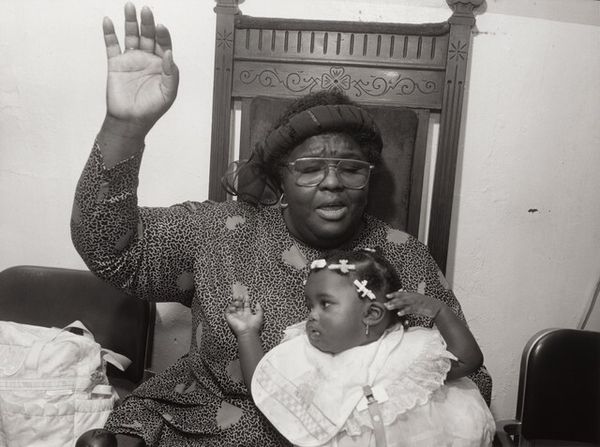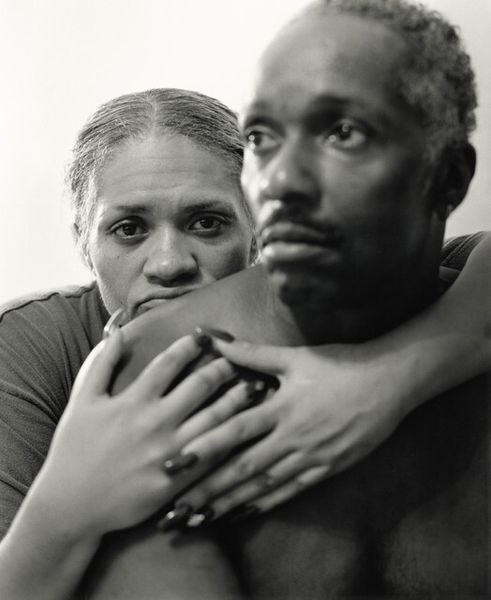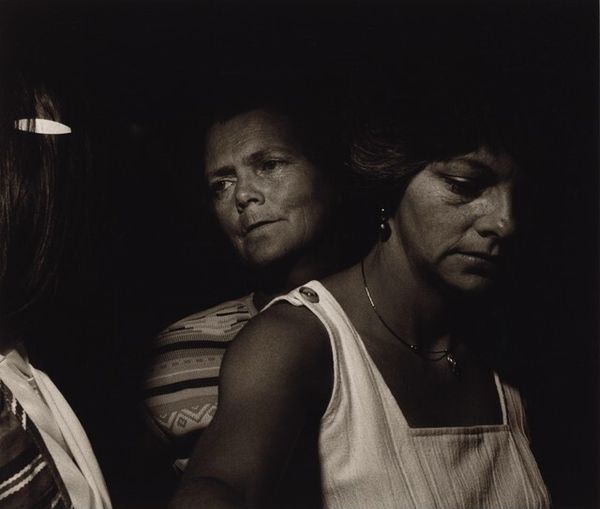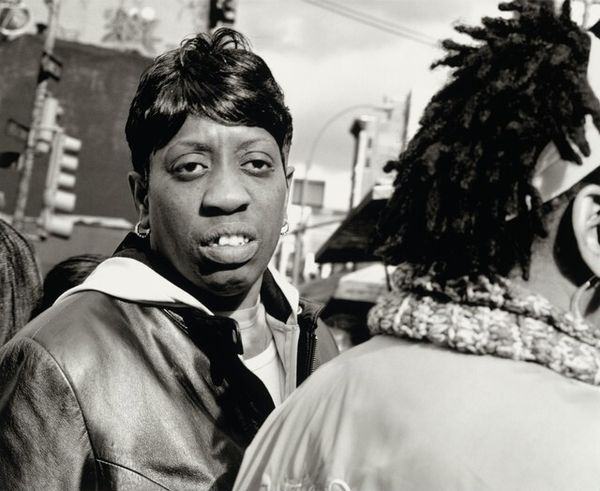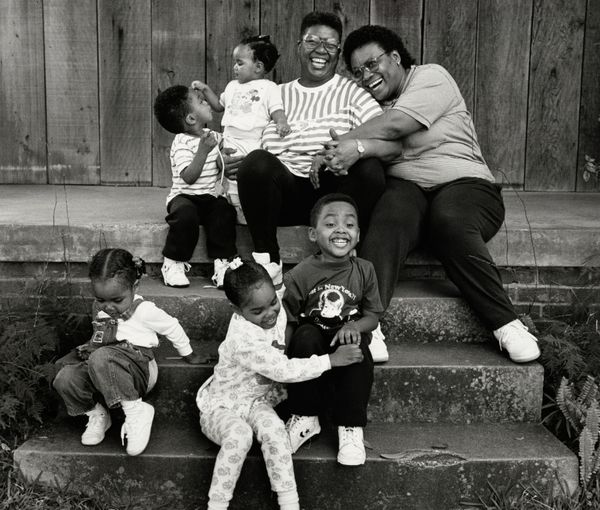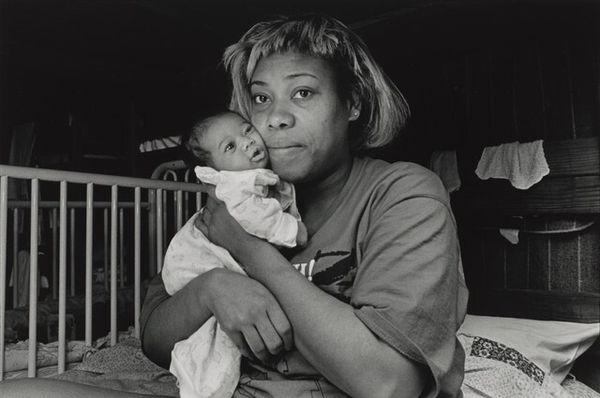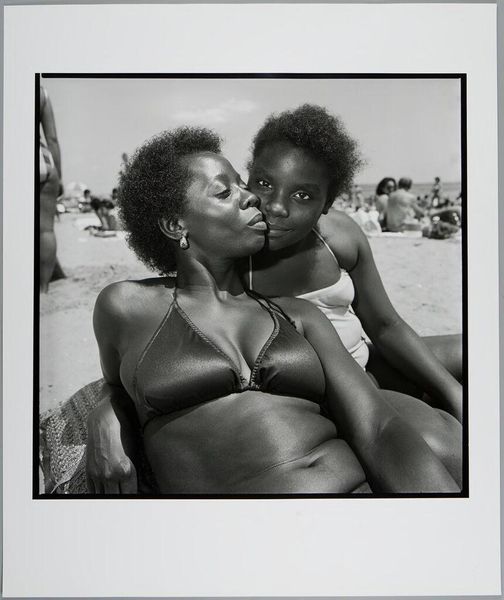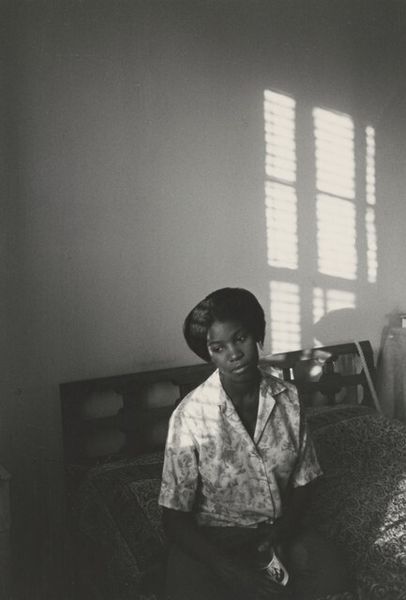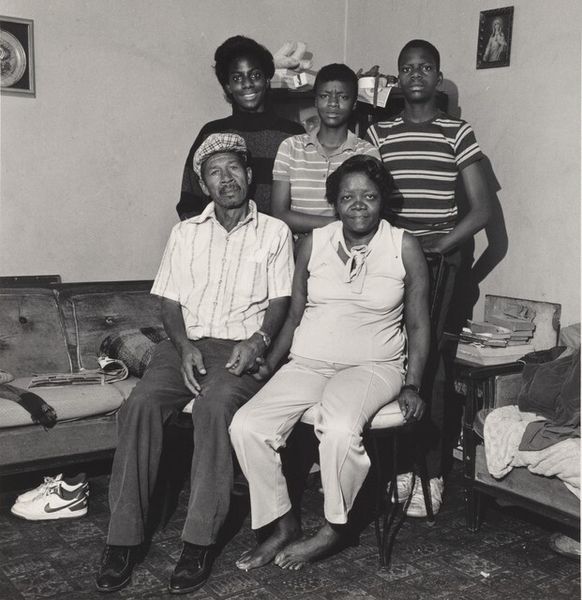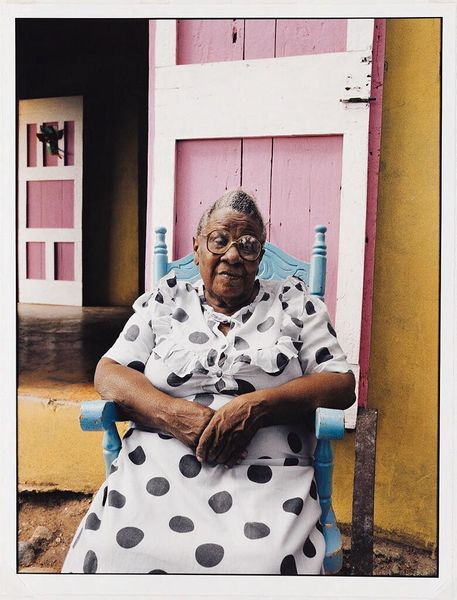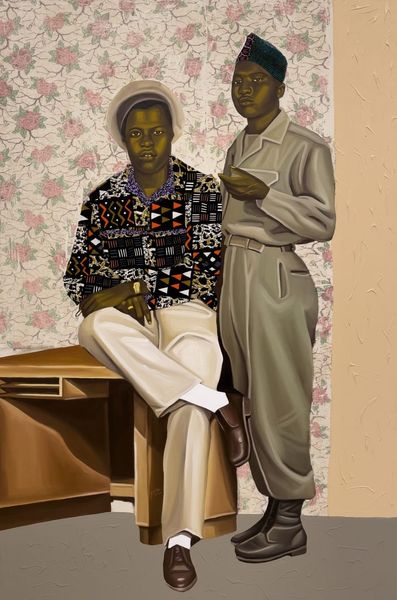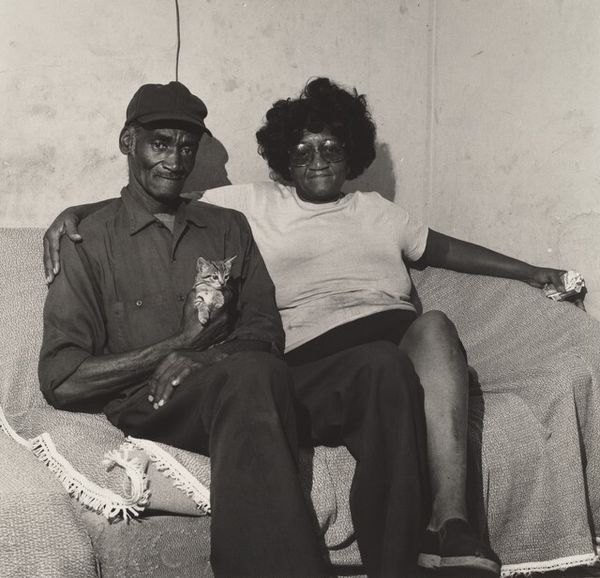
photography, gelatin-silver-print
#
portrait
#
black and white photography
#
photography
#
group-portraits
#
black and white
#
gelatin-silver-print
#
monochrome
#
monochrome
Dimensions: image: 38.7 × 55.8 cm (15 1/4 × 21 15/16 in.) sheet: 50.8 × 60.6 cm (20 × 23 7/8 in.)
Copyright: National Gallery of Art: CC0 1.0
Editor: This gelatin silver print, "Kate and Seleta" by Nancy Andrews, created in 1993, has a quiet intimacy. It's a monochromatic image, with a beautiful range of gray tones and tactile surfaces that draw me in. What stands out for you? Curator: For me, this image vibrates with the visual echo of countless Madonna and Child portraits throughout art history. Editor: Really? I hadn't considered that. Curator: Think about it – the way the two figures are closely positioned, almost intertwined, creates a feeling of protectiveness and nurturing. The visual language connecting women across time carries a psychological resonance. But it also subverts that traditional imagery; this is not simply about motherhood but about womanhood and female bonds in their broadest, most complex forms. The image invites us to consider: what are the contemporary symbols of care and connection between women? Do you see anything else interesting at play? Editor: Well, their clasped hands are so central, taking up the entire bottom half of the composition! It's hard to ignore that physical contact, but what does it symbolize here? Curator: The joining of hands might represent solidarity, love, and the transference of energy, similar to gestures in religious iconography that impart blessings. But this symbolism isn't static. Their gaze, meeting ours with a powerful steadiness, anchors the image in lived experience, making it immediate. We are not just passive observers of a staged scene, but participants invited to witness and consider the nature of their bond. Editor: That’s such an intriguing interpretation. I’ll definitely look at portraits differently now. Curator: And hopefully consider the ever-evolving language of visual symbols, and what stories they reflect across time.
Comments
No comments
Be the first to comment and join the conversation on the ultimate creative platform.
